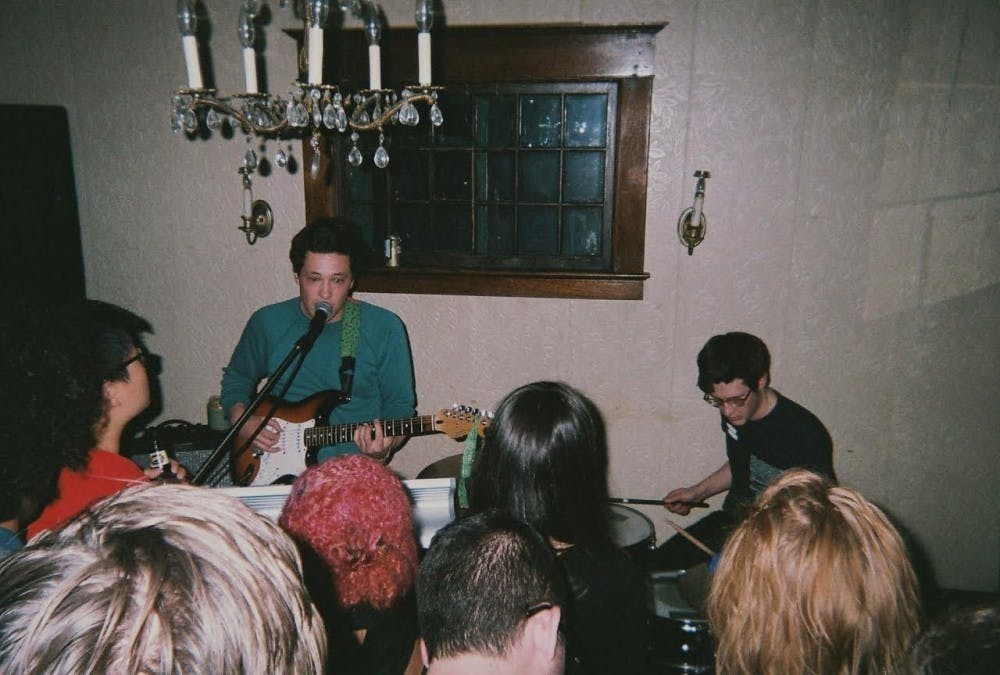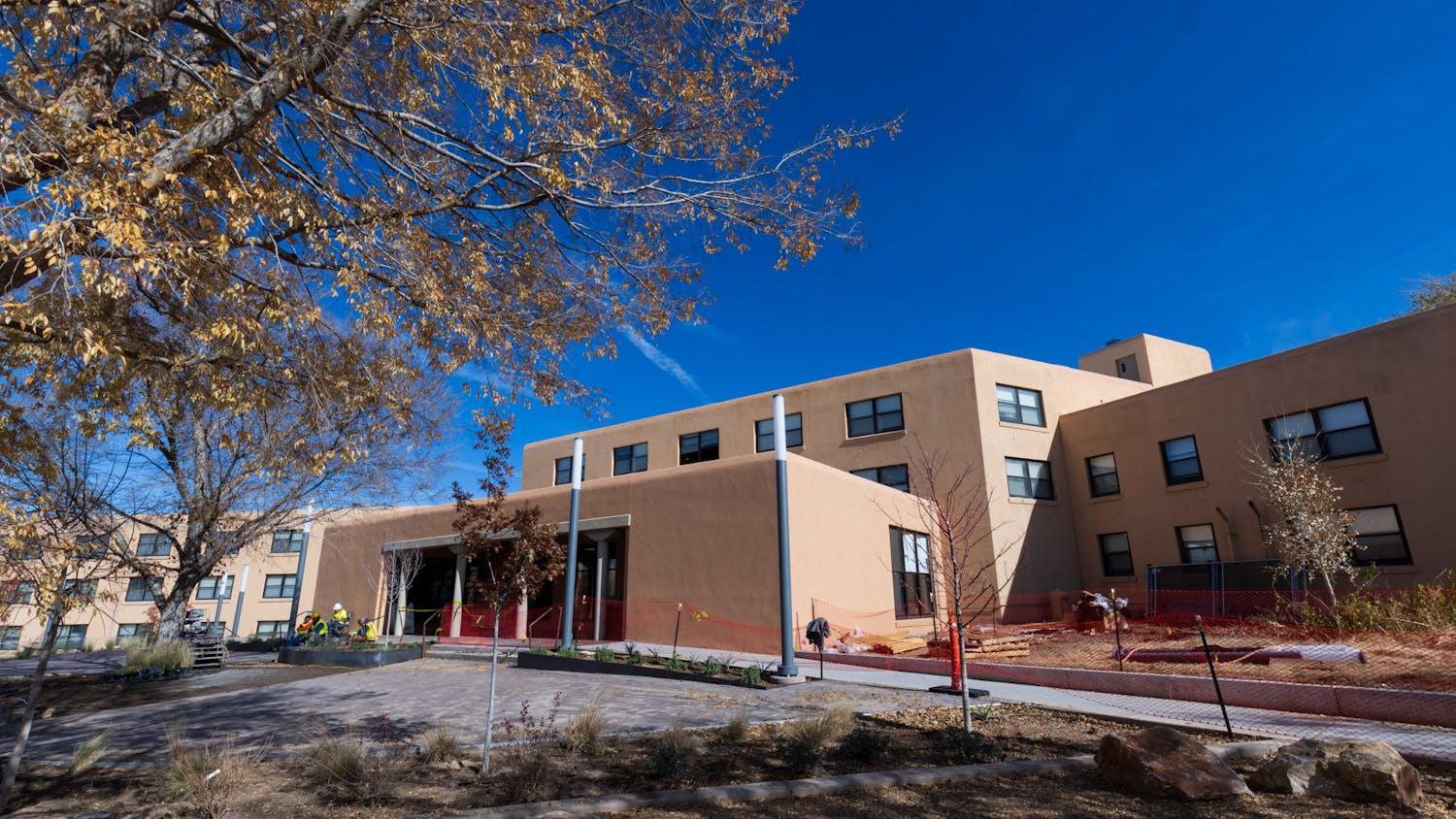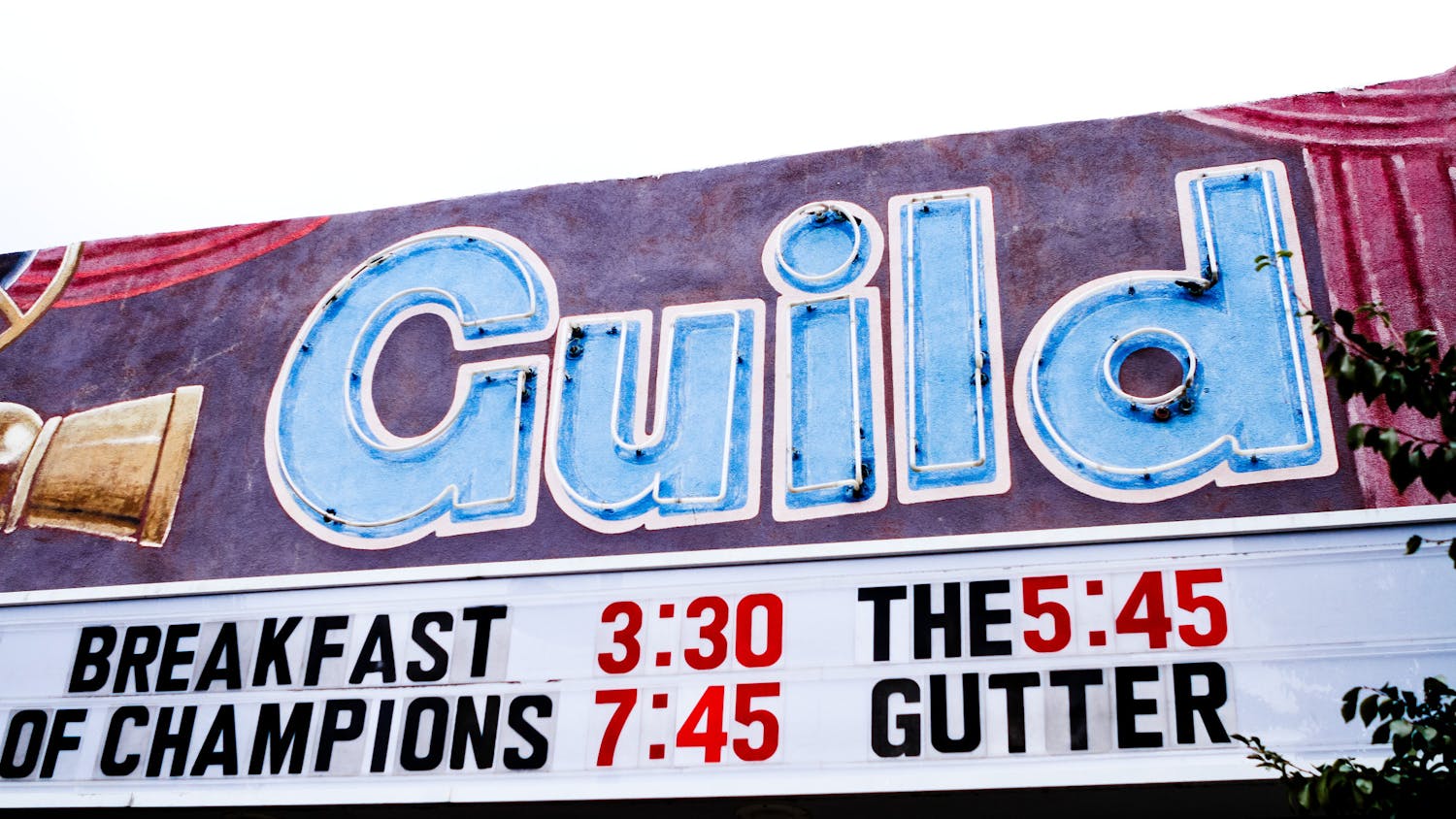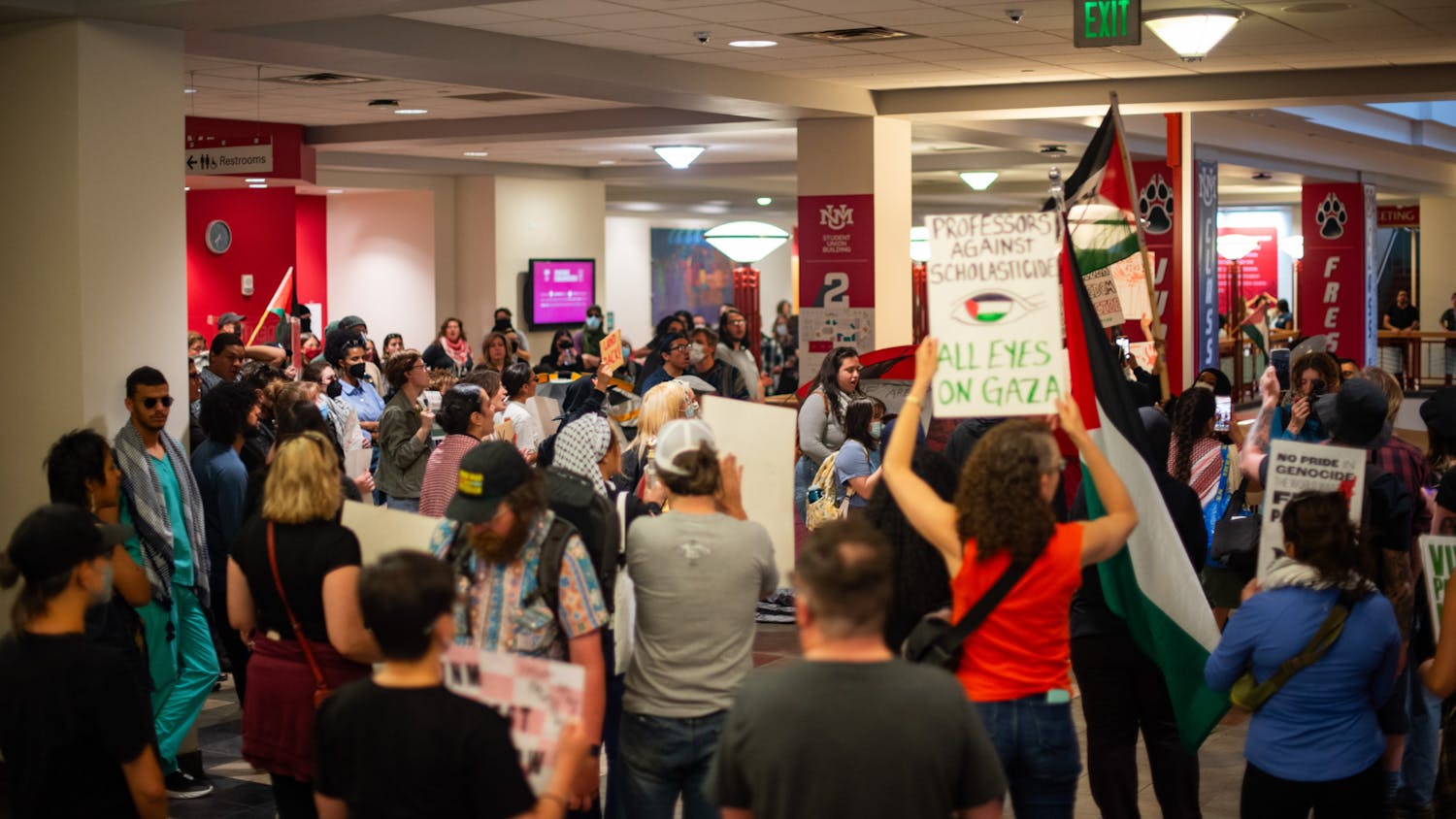the light fixture hangs like a noose
amidst the partygone people and partygone friends
well I’m pretty sure you were losing your mind
locked in the bathroom upstairs you were falling apart from me
The Neighborhood House is beautiful, but anonymously so. Built in Grand Rapid’s quiet Eastown neighborhood by early 20th century Dutch immigrants, it stands small and unassuming in white and green.
At the time of its construction, handsome streetcars ran just a street across on Wealthy, sending weekenders to ride rollercoasters and ferries on Reed’s Lake. This was long before General Motors paid the city to demolish the streetcars after the war, long before the white flight of the ‘60s, and the gang wars of the ‘90s, and the ongoing white gentrification of the 2010s.
Today it is a college house. A bike is perpetually slung on the house’s oddly AstroTurfed steps. During shows, vans vie for space on the tree-lined street while Calvin and GVSU students line up on the stairs for the only bathroom.
PBR and CVS wine is passed around the kitchen. In the living room, friends talk around the mounted boar’s head with the detachable tongue. A door in one of the bedrooms leads to an attic for friends to smoke.
It was in this house where I heard the song “Solitude” for the first time. The show was CARE’s first in five months, two whole years after their first and only release. Billed as a rebirth of sorts, a crowd of excited friends and fans gathered in the dining room as Justin Majetich (they/them) put on the sample of a previous party on the speakers, and Justin's brother Josie brought in the first steady round on the drums.
As the new song formed in front of us, it became apparent that they were singing about the same house we were standing in. The bathroom upstairs, the attic, the gaudy fake chandelier, the pensive friends who smiled and nodded whenever they heard their names sung.
Justin sang about the unstoppable loneliness of being presently aware of a beautiful moment’s finitude. And in that moment, surrounded by familiar faces in that beautiful house in that particular point of history, I felt it heavily.
so up to the attic I go, where friends they are
smoking down under the glow of christmas lights
there’s Jackson and Jenna and Robbie and Rachel
and Derek and Maggie and Jem Jem and Josie
is sounding a trumpet for all of us now
can’t you hear it so anciently peal through the silence of
first snows and dead kids with delicate boyfriends?
it signals a passage from all that I’ve loved and I’ll never be back
Get content from The Daily Lobo delivered to your inbox
CARE’s first album was released in 2012: “Yellow Trumpeter Comforter Swan,” a hook-laden and guitar-driven triumph brimming with youthful angst and energy. Their follow-up, the 70-minute maximalist pop masterpiece “LUV IN THE RUINS,” came out five years later this January.
It is an ambitious document of being queer and in love in a loveless American empire. Musically, each song is composed of many others – switching melodies and time signatures abruptly like a fever dream or an onset of sudden flashbacks (“You Hallucinate” is perhaps the best example of this form).
It is an intersection of genres, from the jazz-laden elements of “Moonlight,” the sprightly introduction to “Solitude” that wouldn’t be out of place on a saccharine folk-rock record, the electronic dance fadeout on “Netcong” and the stirring rock guitar anthems that break out in “Switzerland,” “You Hallucinate,” “Jade” and “Insomnia.”
“LUV IN THE RUINS” is also a combination of unseen influences. The sexual obsession and electronic artificialness of Jamaican Queens (a retired Detroit pop trio). The fixation on death and water, and the self-absorbed altered realities of The Wasteland. The poetry class word association and string of like-sounds and images that invite diverse interpretation. The monoliths of color by modernist painter Mark Rothko.
All of these hyper-coalesce into an epic personal narrative that stretches from the beginnings of messy love to a preoccupation with crucifixion. This is not a normal album.
But the wait for this record was an agonizingly long four-and-a-half years of anticipation. I saw many CARE shows in that time, learning songs solely from live performances and two demos. I witnessed their sound evolve from a four-person indie rock outfit to solo MIDI karaoke-style anxiety pop.
And I got to know Justin, an arm’s length friendship of encouragement and mutual respect. We’ve been cognizant of each other’s lives and struggles, dipping in and out of overlapping friend groups, sharing professors and similar experiences.
It’s a bittersweet privilege to know someone who creates art that you admire. As much as you want to, it’s impossible to fully separate the art and the artist. I am always wary that my speculation can be intrusive, or that my friendship can be misinterpreted. I do not want to be seen as only wanting to get closer to the source of the art that I enjoy, or worse, taking advantage for favors. Even in writing this article I feel apprehensive about crossing a personal line and hope that I have not.
That being said, it is still certainly a privilege. To witness an album as challenging as “LUV IN THE RUINS” take its form over the span of years makes it all the more enduring and personally significant. And it is a privilege to have such a remarkable album as a period piece, as a soundtrack to an era of my life that will never happen again.
all of your friends move away
there are better things
sure there are, but what does that change
when all of the houses we filled
with music and food are empty
The house that I lived in was on Bemis, just two blocks from the Neighborhood House. In the 1930s it was built by religious Dutch immigrants, and by the ‘90s it was a crack house in the center of a gang war (while planting flowers in the front yard, our upstairs neighbor would find crusted pipes and needles).
Then, for $150 a month, it became my home. I slept among the animals; the rats in the basement, the squirrels in the walls, the birds above my window and the raccoon couple living, for some unanswerable reason, on the roof.
One of the most fulfilling weekends of my life was Lamp Light 2014, a house show festival taking place in my Eastown neighborhood. I could easily walk back to my house in-between sets. Lamp Light is a vision of how things should be.
There is a focus on local community, although it draws musicians and audiences from all over the United States. People donate kegs of mead and kombucha, sound equipment and expertise, their time to cook food and wash dishes, and their basements and living rooms.
One of these houses was the Neighborhood House.
After this introduction to the community I lived in, the next two years were spent loving it. I played some shows there and went to many others. I wrote an album in my bedroom and recorded another in the living room. I walked to friends’ houses, delivering and receiving food. Although there were times of immense struggle, particularly with mental illness, I knew that I always had a community there to hold me.
Yet like overlapping waves on the shore, this community was amorphous and constantly changing. People moved. Friends came to hate each other. People broke up, some fell in love. Some died. Some got jobs, or had babies. Pronouns changed. Houses changed. Others stayed.
and each furtive walk in the woods
leaves my unhinged at the thought of its finitude
no I can’t stay too long
just wanted to say I care
just want you to know I’m here
I unwillingly moved away from Grand Rapids in September 2016, leaving behind everything I’d known and learned to love for the past four years. During my last week I made it a point to walk up Giddings and by the Neighborhood House. It was a calm and blue-skied summer afternoon. Tall trees held in sunlight. Someone in harem pants locked their bike by the steps of the house, but I did not recognize them. A van was parked outside, but it wasn’t one that I’d seen before. It had changed.
So I remembered the time that we trudged through snow with Lena, a Hungarian artist visiting for J-Term, to watch Radiator Hospital.
I remembered the time that I met Natalie, washing dishes in the basement, and danced with Annika and Chad in the dining room to AOK in the morning.
I remembered drinking komboucha for the first time in the kitchen.
I remembered the party where Coleson wore and cut a pair of boxers off with a machete, where the boar’s tongue had been violated and friends tried to playfully stab each other with knives (I finally left when someone put two wine bottles on the table and started to describe them as the Twin Towers. Apparently it ended in the attic where people talked about their deepest anxieties).
And I remembered watching CARE there twice.
And while I felt sadness, I also felt immense gratitude. While finite, it is this music and these spaces that change you. And I was lucky to have it.
CARE's music can be found at care.bandcamp.com.
James Li is a contributor to Daily Lobo Music. He can be contacted at dailylobomusic@gmail.com






